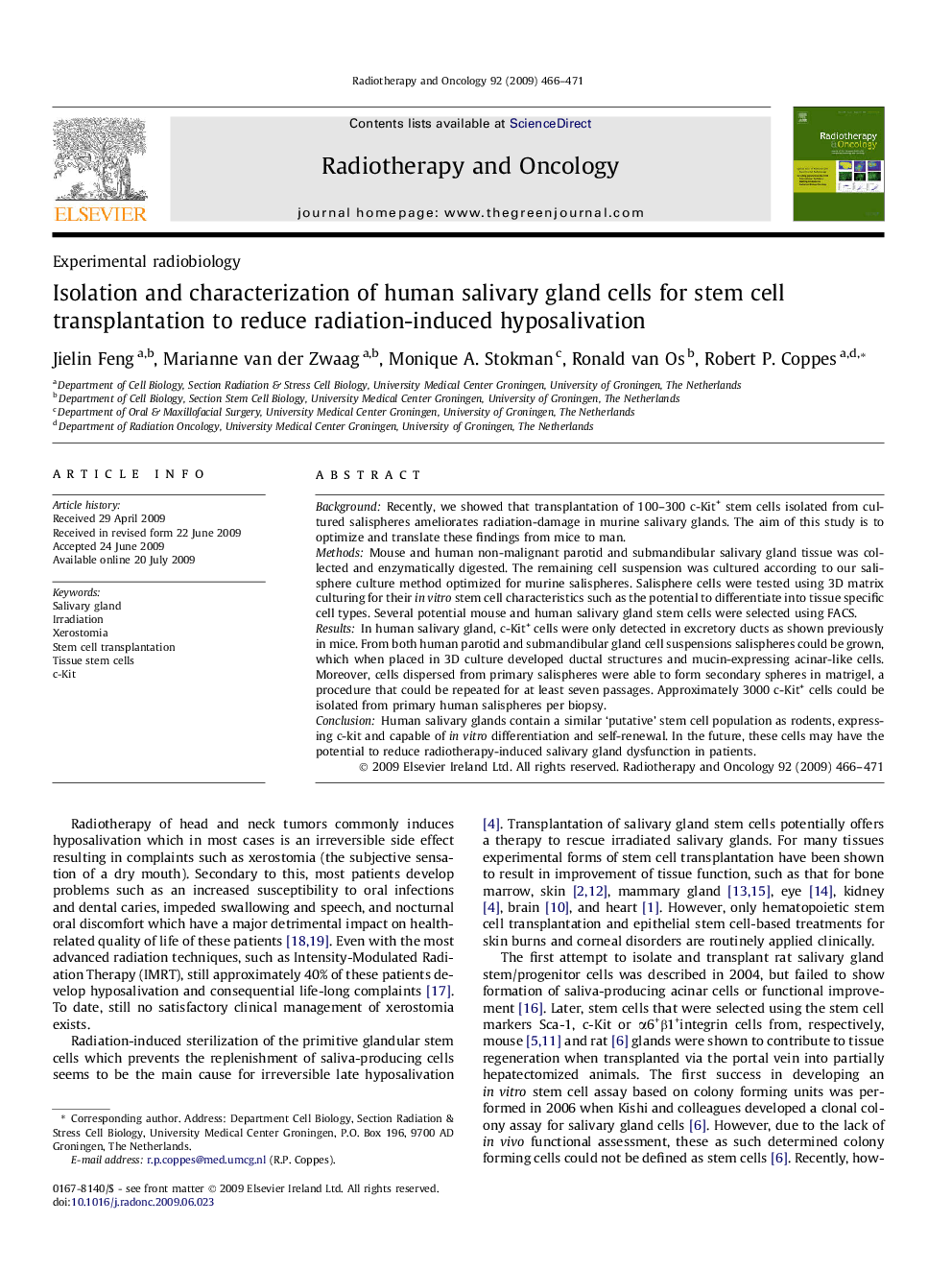| Article ID | Journal | Published Year | Pages | File Type |
|---|---|---|---|---|
| 2158924 | Radiotherapy and Oncology | 2009 | 6 Pages |
BackgroundRecently, we showed that transplantation of 100–300 c-Kit+ stem cells isolated from cultured salispheres ameliorates radiation-damage in murine salivary glands. The aim of this study is to optimize and translate these findings from mice to man.MethodsMouse and human non-malignant parotid and submandibular salivary gland tissue was collected and enzymatically digested. The remaining cell suspension was cultured according to our salisphere culture method optimized for murine salispheres. Salisphere cells were tested using 3D matrix culturing for their in vitro stem cell characteristics such as the potential to differentiate into tissue specific cell types. Several potential mouse and human salivary gland stem cells were selected using FACS.ResultsIn human salivary gland, c-Kit+ cells were only detected in excretory ducts as shown previously in mice. From both human parotid and submandibular gland cell suspensions salispheres could be grown, which when placed in 3D culture developed ductal structures and mucin-expressing acinar-like cells. Moreover, cells dispersed from primary salispheres were able to form secondary spheres in matrigel, a procedure that could be repeated for at least seven passages. Approximately 3000 c-Kit+ cells could be isolated from primary human salispheres per biopsy.ConclusionHuman salivary glands contain a similar ‘putative’ stem cell population as rodents, expressing c-kit and capable of in vitro differentiation and self-renewal. In the future, these cells may have the potential to reduce radiotherapy-induced salivary gland dysfunction in patients.
